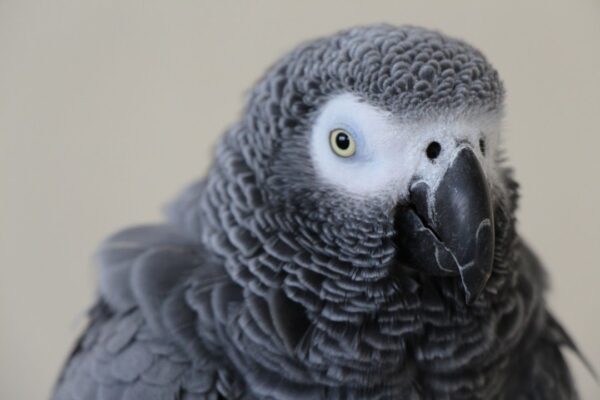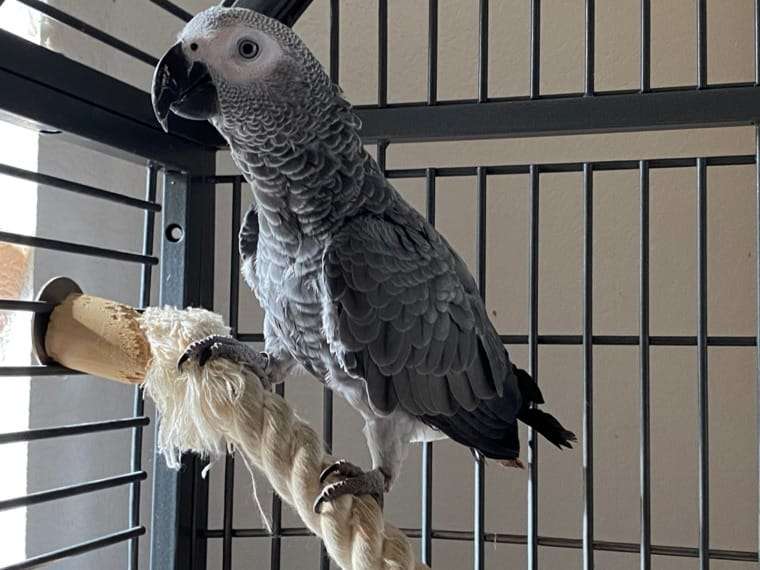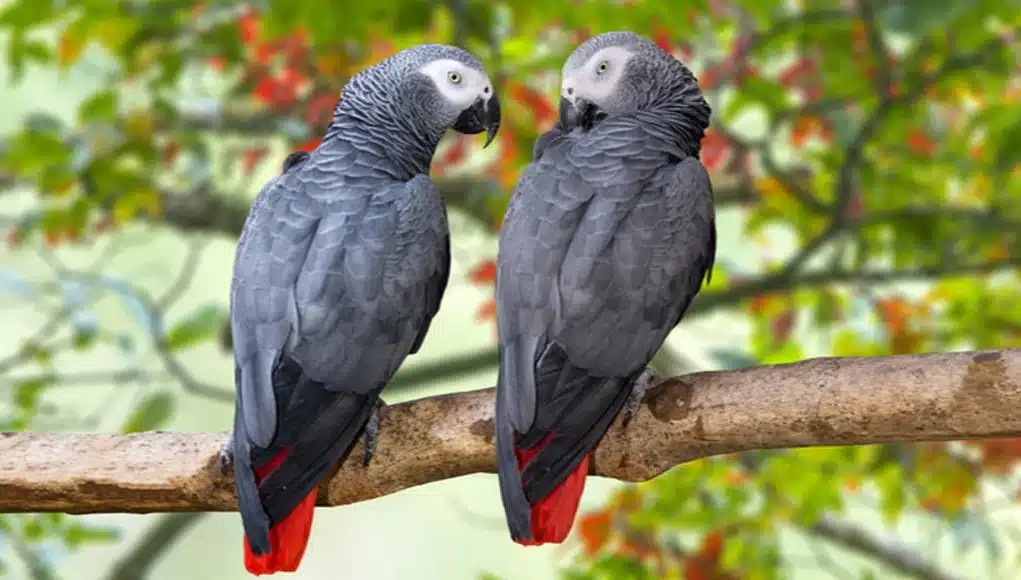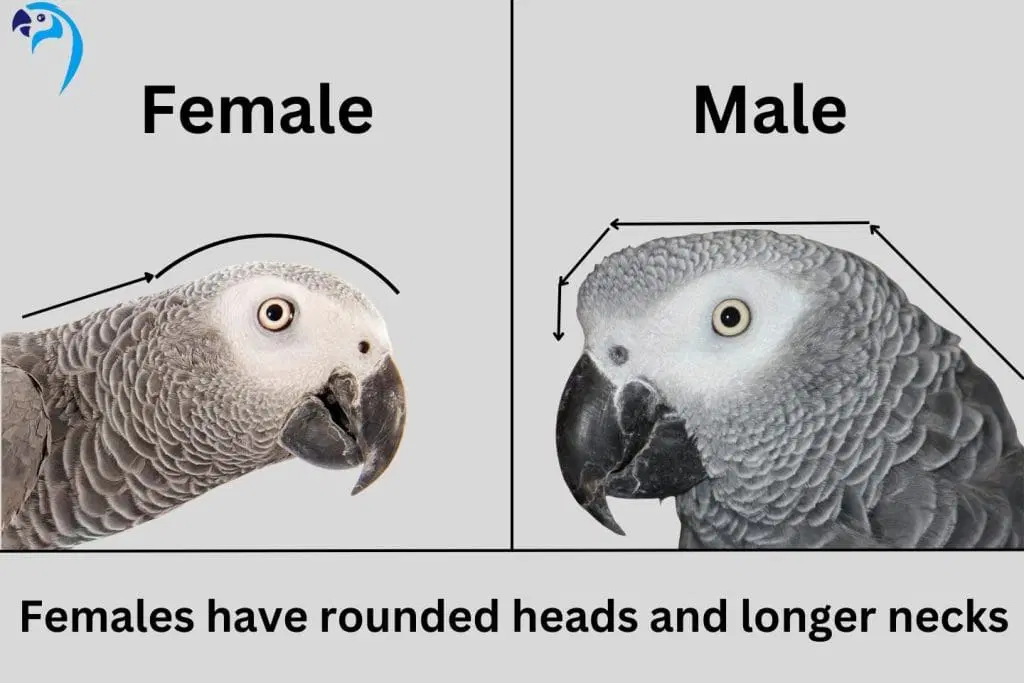Blogs, Species Guides
Male vs. Female African Grey Parrots: Key Differences Explained
African Grey Parrot Male or Female: Know the Differences
When it comes to identifying the gender of your African Grey parrot, have you ever wondered if there are specific characteristics that can help you determine whether it’s a male or female? Can you rely on their behavior or perhaps the color of their feathers? Let’s explore the fascinating world of African Grey parrot gender identification and discover the key insights that can help you decipher the mystery.
Key Takeaways:
- Understanding the differences between male and female African Grey parrots can enhance your bond and ensure their overall care.
- Physical characteristics, such as size, coloration, and body structure, can provide clues about your parrot’s gender.
- The coloration of the feathers and the shade of the eyes can be visual cues for determining African Grey parrot’s gender.
- Behavior patterns, including assertiveness and vocalization, can also be indicative of the parrot’s gender.
- For a definitive answer, DNA testing or consulting an avian veterinarian are reliable options.
Physical Characteristics
African Grey parrots possess distinct physical characteristics that can aid in determining their gender. By observing differences in size, coloration, and body structure, you can gain valuable insight into whether your parrot is male or female.
Size: A notable characteristic of African Grey parrots is their size. Generally, male African Greys tend to be larger than their female counterparts. Males can reach an average length of 13 inches (33 cm), while females typically measure around 11 inches (28 cm).
Coloration: Another aspect to consider is the coloration of the feathers. While both male and female African Greys have predominantly gray plumage, there can be subtle differences in shade. Males often exhibit a darker charcoal gray overall plumage, while females may feature a slightly lighter gray coloration.
Body Structure: Paying attention to the body structure can also provide clues about the gender of an African Grey parrot. In general, male parrots may have a larger and broader head shape, while females might have a slightly narrower head. Additionally, males can sometimes display a more pronounced square-shaped beak compared to females.
Evaluating Physical Characteristics
To determine the gender of your African Grey parrot based on their physical characteristics, it is essential to make comparisons and observe these traits over time. Keep in mind that individual variations exist, and relying solely on physical attributes may not yield definitive results. Supplementing your analysis with other methods, such as behavior observation or DNA testing, can help confirm your parrot’s gender more accurately.
| Physical Characteristics | Possible Gender Indicators |
|---|---|
| Size | Males are typically larger than females. |
| Coloration | Males often have a darker gray plumage. |
| Body Structure | Males might have a broader head shape and square-shaped beak. |
Feather Coloration
One of the visual cues to determine the gender of an African Grey parrot is the coloration of their feathers. Males tend to have a darker, charcoal gray overall plumage, while females may have a lighter shade of gray. Observing the coloration of their feathers can be a helpful indicator.
The african grey parrot sex can sometimes be identified by closely observing the color of its feathers. Males typically exhibit a darker, charcoal gray overall plumage, giving them a distinguished appearance. On the other hand, females may display a lighter shade of gray. By paying attention to these subtle color differences, you can gain valuable insights into the gender of your African Grey parrot.
This substantial variation in feather coloration between male and female African Grey parrots serves as an important visual clue for determining their gender. This variation is due to melanin distribution in their feathers, which is influenced by hormones and genetics.
| Male African Grey Parrot | Female African Grey Parrot |
|---|---|
 |
 |
As seen in the comparison images above, the distinction in feather coloration between males and females is quite evident. The male African Grey parrot showcases a rich, deep gray shade, while the female exhibits a softer, lighter-gray appearance.
However, it’s important to note that feather coloration alone is not a foolproof indicator of gender. There can be variations within each gender, and certain genetic factors or environmental conditions can affect the coloration. Therefore, it’s recommended to consider other determining factors, such as behavior and physical characteristics, for a more accurate conclusion on your African Grey parrot’s gender.
Eye Color
When determining the gender of an African Grey parrot, another characteristic to consider is the color of their eyes. While other factors may provide clues, such as physical characteristics and behavior differences, eye color can also provide valuable insights into their gender.
Males of the African Grey parrot species typically have black or dark brown eyes. This darker pigment in their eyes is a distinguishing feature that can often be observed and used as a point of reference when trying to determine if your parrot is male.
On the other hand, females of the African Grey parrot species may have shades of gray or lighter brown eyes. Their eye color tends to be lighter compared to the males, which can be an indication of their gender.
It’s important to note that eye color should be observed in conjunction with other factors to accurately determine the gender of your African Grey parrot. While eye color can provide additional insights, it should not be solely relied upon as the sole indicator of gender.
Behavior Differences
When trying to determine the gender of your African Grey parrot, behavior can provide valuable clues. Male and female African Grey parrots often exhibit distinct behaviors that can help you make a more accurate determination.
Vocalization
One of the noticeable behavior differences between male and female African Grey parrots is their vocalization. Males are typically more assertive and vocal, often showcasing louder and more frequent calls. They may engage in mimicry and imitate various sounds and voices. On the other hand, females tend to be quieter and more reserved, with less vocalization overall.
Social Interaction
Observing your African Grey parrot’s social interaction can also provide insights into their gender. Male African Grey parrots often exhibit more dominant and territorial behaviors. They may display aggressive tendencies or exhibit protective behavior over their environment or favored individuals. Female African Grey parrots, on the other hand, tend to be more docile and less territorial, preferring a calmer and quieter social dynamic.
Caretaking Behavior
Caretaking behavior is another aspect where male and female African Grey parrots may differ. Male African Grey parrots sometimes exhibit more nurturing behavior, particularly towards their favorite human or objects. They may become particularly protective of their chosen mate or specific possessions. Female African Grey parrots, meanwhile, are generally less inclined towards caretaking behavior, and their nurturing tendencies are less pronounced.
Observing their behavior patterns can provide valuable insights into your African Grey parrot’s gender. Pay attention to their vocalization, social interaction, and caretaking behavior to help determine whether your parrot is male or female.
DNA Testing
If you want to have a definitive answer about your African Grey parrot’s gender, you can opt for DNA testing. This involves collecting a small sample, such as feathers or blood, and sending it to a laboratory for analysis. DNA testing is a reliable method for determining the gender of your parrot.
Consulting an Avian Veterinarian
If you’re unsure about determining your African Grey parrot’s gender on your own, consulting an avian veterinarian can provide expert guidance. They have the knowledge and experience to conduct a thorough physical examination and explain the various methods available for determining your parrot’s gender. With their expertise, you can gain valuable insights and clarification about your parrot’s gender.
Avian veterinarians are trained professionals who specialize in the health and care of birds. They understand the unique needs and characteristics of different bird species, including African Grey parrots. By consulting an avian veterinarian, you can benefit from their in-depth understanding of parrot physiology and behavior.
During your visit, the avian veterinarian will perform a physical examination of your parrot. They may assess the size, shape, and overall anatomical features of the parrot to determine its gender. Additionally, they might examine the pelvic bones, which can provide further clues about your parrot’s gender.
In some cases, a blood or DNA test may be recommended. This involves collecting a small sample, such as blood or feathers, from your parrot. The sample will then be sent to a laboratory for analysis. The results will provide an accurate determination of your parrot’s gender.
Consulting an avian veterinarian is particularly useful if you have limited experience in determining parrot gender or if you are unsure about the accuracy of your own observations. Their professional expertise and advanced diagnostic tools can provide you with reliable and conclusive results.
It is important to note that the assistance of an avian veterinarian may come with a cost. However, the peace of mind and accurate information they can provide about your parrot’s gender make it a worthwhile investment.
The Benefits of Consulting an Avian Veterinarian:
- Expert guidance from a trained professional
- Thorough physical examination and assessment of anatomical features
- Possible blood or DNA test for accurate determination
- In-depth understanding of African Grey parrot physiology and behavior
- Reliable and conclusive results
Conclusion
Identifying the gender of your African Grey parrot is an essential aspect of their overall care and well-being. By considering the physical characteristics and behavior differences between males and females, you can gain valuable insights into your parrot’s gender.
Observing the coloration of their feathers and the color of their eyes can provide helpful indicators, but it’s important to note that these visual cues may not always be definitive. In cases where you want a conclusive answer, DNA testing is a reliable method for sexing African Grey parrots.
If you’re uncertain or want expert guidance, consulting an avian veterinarian can provide professional assistance. They can conduct physical examinations and explain the various methods available for determining your parrot’s gender.
By acquiring knowledge about your African Grey parrot’s gender, you can enhance your bond with your feathered friend and provide them with the appropriate care they need. Understanding their gender allows you to address their unique needs and ensure their happiness and well-being in your home.
FAQ
How can I determine the gender of my African Grey parrot?
There are several ways to determine the gender of your African Grey parrot. You can observe physical characteristics such as size, coloration, and body structure. Feather coloration and eye color can also provide clues. Additionally, behavior differences between males and females can be observed. If you want a definitive answer, DNA testing or consulting an avian veterinarian are reliable methods.
What are some physical characteristics that can help me determine the gender of my African Grey parrot?
African Grey parrots exhibit certain physical characteristics that can provide clues about their gender. Differences in size, coloration, and body structure can help you determine whether your parrot is male or female.
Is feather coloration a reliable indicator of the gender of African Grey parrots?
Yes, feather coloration can be a helpful indicator to determine the gender of African Grey parrots. Males typically have a darker, charcoal gray overall plumage, while females may have a lighter shade of gray.
Are there any differences in eye color between male and female African Grey parrots?
Yes, the color of the African Grey parrot’s eyes can provide additional insights into their gender. Males typically have black or dark brown eyes, while females may have shades of gray or lighter brown.
Are there any behavior differences between male and female African Grey parrots?
Yes, behavior can be a distinguishing factor between male and female African Grey parrots. Males may exhibit more assertive and vocal behaviors, while females tend to be quieter and more reserved.
How accurate is DNA testing in determining the gender of African Grey parrots?
DNA testing is a highly reliable method for determining the gender of African Grey parrots. It involves collecting a small sample, such as feathers or blood, and sending it to a laboratory for analysis.
What should I do if I’m unsure about determining my African Grey parrot’s gender?
If you’re unsure about determining your African Grey parrot’s gender on your own, it’s recommended to consult an avian veterinarian. They can conduct a physical examination and explain the various methods available for determining your parrot’s gender.
Why is it important to know the gender of my African Grey parrot?
Identifying the gender of your African Grey parrot can be important for their overall care. It can help you understand their specific needs, behaviors, and potential health risks. Additionally, knowing their gender can enhance your bond with your parrot and ensure their well-being.


